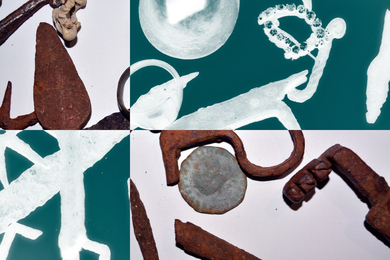The US Olympic team may very well be changing its training equipment for rowers, thanks to a prize-winning invention by five MIT students.
The students-Gloria Ro, John Van Houten (both varsity rowers), Andrew Milleville, Aoy Tomita and Mark Hytros-were enrolled in 2.72 (Elements of Mechanical Design in the Department of Mechanical Engineering) last spring when Ms. Ro saw a poster in which the US Olympic Committee advertised a contest for designing improved sports training equipment for its team members. They drew up plans during the course and submitted them to the USOC in June, then found out in July that their group was one of five finalists.
In mid-September, the students made a two-day trip to USOC headquarters in Colorado Springs, CO to present their idea in person to the judges. That night, they found out they'd won the $2,000 top prize (half of which they'll keep and half of which goes to MIT).
"It was nice to see all that work paid off," Mr. Van Houten said.
The MIT group beat out other entries that included new ski boots designed to reduce knee injuries, a kayak oar, a weight training machine and a bicycle cog set. "I was really impressed with a lot of their designs," Ms. Ro said.
The students' machine, which they have dubbed the Ultima T Ergometer, was designed to better mimic the motion of a rower on one side of a scull pulling at a single oar. Machines of that type now on the market generally consist of a bar attached to a chain that the rower pulls straight toward him or her. "They don't really model the stroke or resistance well at all," Mr. Van Houten said.
In contrast, the Ultima T Ergometer has a bar attached at one side, so the pulling motion is in more of an arc, they explained. This allows rowers to practice their technique better, and it also uses muscles in a way that more closely resembles the exercise in actual rowing. The resulting equipment will be somewhat wider than traditional rowing machines, but it will be easy to disassemble for transport.
This semester, four of the five students who are now seniors (Ms. Tomita has graduated), are taking a follow-up mechanical engineering course in which they will build a prototype according to their plans. Eventually, they hope to patent their design and market their invention. They may even be able to showcase it at the annual Indoor Rowing Championships in February.
A version of this article appeared in the October 6, 1993 issue of MIT Tech Talk (Volume 38, Number 9).





